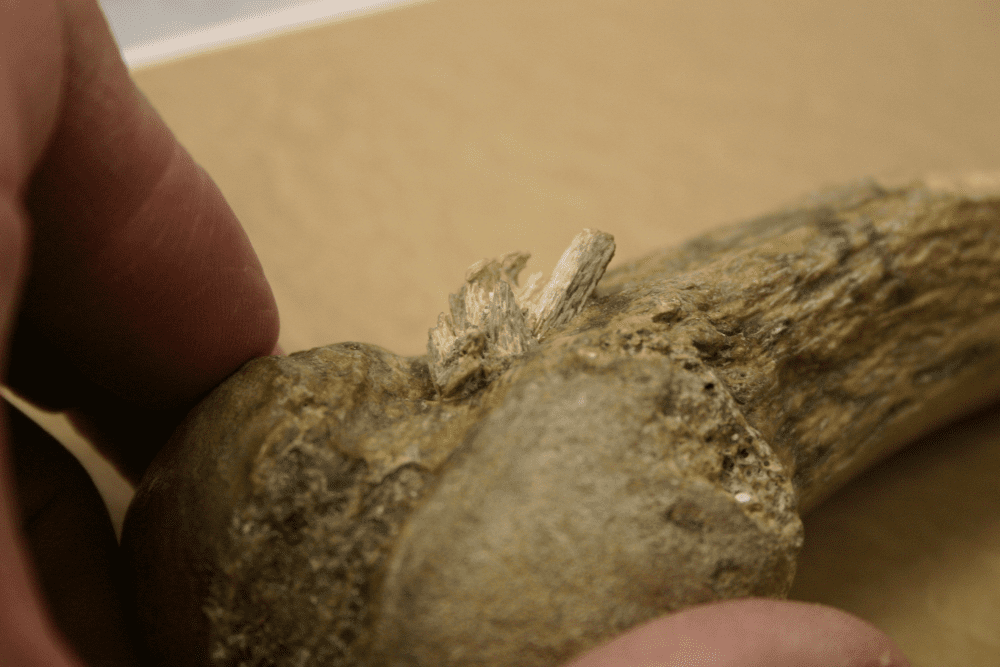As early human tool use turned to weaponry, our ancient ancestors got creative with bones as projectiles. In Europe, bone points were used during the Upper Palaeolithic, and now the discovery of a projectile lodged in a mastodon’s rib cage has shown that in the Americas, bone points date back as far as 13,900 years ago.
Projectile points are a variety of stone and bone points that were used in warfare and hunting by ancient humans. What separates them from early tools like axes is that they were thrown as part of a spear, rather than held, and now researchers have described one such tool found lodged inside the remains of a mastodon.
The projectile point retrieved from the Manis site in North America isn’t rock, but actually the bone of a mastodon: the same species whose rib it was found embedded in. You might wonder how it’s possible to differentiate two types of mastodon bone from one another preserved in a fossil, but the team behind the discovery were able to tell them apart using CT imaging.

Close up of the bone point embedded in the mastodon rib retrieved from the Manis site. Image credit: Center For The Study of the First Americans, Texas A&M University
“The rib of the Manis mastodon has very thin cortical bone and is mostly this spongy bone,” said lead author Mike Waters to IFLScience. “The embedded pieces are thick cortical bone, thicker than what you see on the rib.”
“Once you put all the fragments together, it is a thick piece of cortical bone. On the CT images, the thick cortical bone fragments are dense and bright white. The spongy bone looks like a web.”

A CT scan of the bones show the point fragments differs greatly from the rib it’s embedded in. Image credit: Center For The Study of the First Americans, Texas A&M University
As the oldest bone projectile point found in North America, it provides the oldest direct evidence of humans hunting megafauna with bone versions of these weaponized projectiles. The mastodon didn’t go extinct until around 13,000 to 12,700 years ago, showing that humans were shooting their shot long before these ambitious meals disappeared.
It also predates Clovis artifacts from the region which date back to around 13,000 years ago. They’re so named after the prehistoric Paleoamerican culture of the same name, but the identification of this bone projectile from the Manis site shows that people were living here long before the Clovis culture.
The findings of the new study also build on growing evidence that humans may have come to the region by boat as they were living and hunting here before the Ice Free corridor fully unzipped. While it’s thought this obstacle that died out with the last Ice Age first began thawing around 15,400 years ago, growing research appears to indicate that it’s unlikely it was available as a route for transport before the first peopling of the Americas.
“Sites like Manis are rewriting the story of the First Americans,” continued Waters. “My plans are to continue to study and investigate the people to enter the Americas at the end of the last Ice Age.”
“Today a clearer picture of the peopling of the Americas is emerging which indicates people were here by 16,000 years ago. This creates many new problems to questions to investigate for myself and future generations. I plan to continue to help in this process.”
Stay tuned, folks!
The study was published in Science Advances.
Source Link: Mastodon Speared By Bone Shows Humans Were Hunting Megafauna 13,900 Years Ago